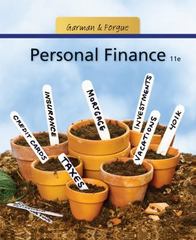Please answer question a and b

UCL Partners, a VC fund, is considering a $8 million investment in Schnapchat, a new and promising video conferencing start-up. UCL Partners expects Schnapchat to exit in 4 years with a probability of 30% or lose all its value with a remaining probability of 70%. Upon successful exit in 4 years, UCL Partners forecasts earnings of $10 million. Public comparable companies trade at P/E ratios of 27. Both parties agree that Schnapchat's cost of capital is 50% and the annual volatility of its value is 100%. The $8 million funding will be used immediately to purchase more data collection servers and improve connection stability software. The annual riskless rate is 2%. a) [5 marks] UCL Partners proposes to structure the investment as common stock. Find the current start-up value and the VC equity stake. b) [8 marks] Suppose that, in hopes that Schnapchat founders are unaware of the value of additional VC-friendly contract terms, UCL Partners instead asks for: A convertible preferred stock with conversion into 50% of the common stock A 1.25x liquidation preferred Participating preferred The mandatory cap on the liquidation value of all preferred terms of 3x Draw the payoff diagram of the VC contract. c) [6 marks) Interpret the VC contract as a portfolio of options on the start-up value. d) [3 marks] Compute the value of the VC contract and the fraction of the VC value in the value of the start-up using available information and option pricing tools. e) [8 marks, difficult] Schnapchat founders are, in fact, savvy about the value of additional contract terms. They do not mind that UCL Partners include these terms as long as the conversion of the VC contract into common stock is adjusted to keep the value of the VC contract at $8 million. What is the fraction Z of the common stock to which a VC contract should convert? Write down the equation that determines 2 (6 marks) and evaluate it using option pricing tools (2 marks). UCL Partners, a VC fund, is considering a $8 million investment in Schnapchat, a new and promising video conferencing start-up. UCL Partners expects Schnapchat to exit in 4 years with a probability of 30% or lose all its value with a remaining probability of 70%. Upon successful exit in 4 years, UCL Partners forecasts earnings of $10 million. Public comparable companies trade at P/E ratios of 27. Both parties agree that Schnapchat's cost of capital is 50% and the annual volatility of its value is 100%. The $8 million funding will be used immediately to purchase more data collection servers and improve connection stability software. The annual riskless rate is 2%. a) [5 marks] UCL Partners proposes to structure the investment as common stock. Find the current start-up value and the VC equity stake. b) [8 marks] Suppose that, in hopes that Schnapchat founders are unaware of the value of additional VC-friendly contract terms, UCL Partners instead asks for: A convertible preferred stock with conversion into 50% of the common stock A 1.25x liquidation preferred Participating preferred The mandatory cap on the liquidation value of all preferred terms of 3x Draw the payoff diagram of the VC contract. c) [6 marks) Interpret the VC contract as a portfolio of options on the start-up value. d) [3 marks] Compute the value of the VC contract and the fraction of the VC value in the value of the start-up using available information and option pricing tools. e) [8 marks, difficult] Schnapchat founders are, in fact, savvy about the value of additional contract terms. They do not mind that UCL Partners include these terms as long as the conversion of the VC contract into common stock is adjusted to keep the value of the VC contract at $8 million. What is the fraction Z of the common stock to which a VC contract should convert? Write down the equation that determines 2 (6 marks) and evaluate it using option pricing tools (2 marks)








